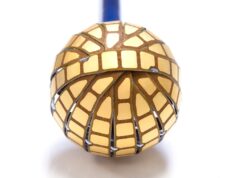An economic analysis of the RAFT (Resynchronization / defibrillation in ambulatory heart failure trial) trial was presented at HearthRhythm 2012. Data demonstrated that cardiac resynchronisation therapy with defibrillation (CRT-D) is a cost-effective treatment for mildly symptomatic heart failure patients.
The findings showed a US$33,025 cost per Quality Adjusted Life Year (QALY) gained using Medtronic CRT-Ds in a mild, New York Heart Association (NYHA)-designated Class II-III heart failure patient population, substantially lower than the benchmark for therapy cost effectiveness of other serious chronic conditions that cost at least US$50,000 per QALY gained. QALY is a measure of the quantity and quality of life.
The RAFT economic analysis is the only study to demonstrate cost-effectiveness in conjunction with the significant mortality benefit of CRT-D in mildly symptomatic heart failure patients. It complements the expansive body of clinical evidence for CRT-D.
In the RAFT economic analysis, patients who received CRT-D were estimated to gain more than one quality-adjusted life year (1.07) at an additional cost of US$35,308 over a lifetime horizon, the typical time period commonly cited by health economists.
“The large-scale RAFT trial has provided us with a wealth of clinical insight into the overall benefits of CRT-D in treating mild heart failure, proving that this advanced therapy significantly decreases mortality and reduces heart failure hospitalisation rates with an economic value to the healthcare system as a whole,” said George Wells, University of Ottawa Heart Institute, Ottawa, Canada.
According to the American Heart Association, approximately 6 million people in the United States suffer from heart failure, and the estimated cost for treating the life-threatening condition is almost US$40 billion per year. In line with numerous clinical trials showing that CRT-D is a cost-effective treatment approach in treating moderate-to-severe disease, this new data confirms it is also associated with a cost effectiveness benefit per QALY gained in mild heart failure patients.
Last month, the FDA expanded the indication for Medtronic’s CRT-D devices to treat NYHA Class II heart failure patients with a left ventricular ejection fraction (LVEF) of less than or equal to 30%, left bundle branch block (LBBB), and a QRS duration greater than or equal to 130 milliseconds. The expanded indication fulfills a serious unmet need by enabling treatment with CRT-D in indicated patients in the earlier stages of heart failure, before their symptoms start impacting their quality of life.
The economic analysis assessed the healthcare-related costs and QALYs of 1,798 patients randomised to receive CRT-D or ICD therapy extrapolated across a lifetime horizon, which was facilitated by an economic model that combined RAFT patient data with long-term data on the longevity of the medical devices. Cost in regard to QALYs was discounted at 3% per year.
Healthcare-related costs examined included the treatment device (plus any replacements), hospitalisation (both cardiovascular and non-cardiovascular related), pharmaceutical treatments, physician visits and long-term care, and were calculated using US expenditures.
About the RAFT Trial
The RAFT trial, sponsored by the Canadian Institutes of Health Research and Medtronic, is a double-blinded, randomised, controlled trial, and showed that CRT-D significantly reduced mortality for mildly symptomatic heart failure patients (NYHA Class II): 29% when compared to patients treated with guideline-recommended implantable ICDs and medical therapy (p=0.006; HR=0.71). The study also demonstrated a significant reduction (30%) in heart failure hospitalisations for this Class II population (p=0.003; HR=0.70), consistent with previously published studies. It involved 1,798 patients in Canada, Europe and Australia. All patients were followed for at least 18 months, and had an average follow-up of 40 months, making it the longest follow-up and largest patient months-of-experience of any randomised controlled trial of CRT therapy.









